Animation is a widely accepted and integral part of the film industry, yet the birth of animation is relatively recent. In fact, the animated feature film is actually less than a century old! How did animation transform from simple series of drawings to the breathtaking scenes we see in films today?
Humble Beginnings
Early Animation Techniques
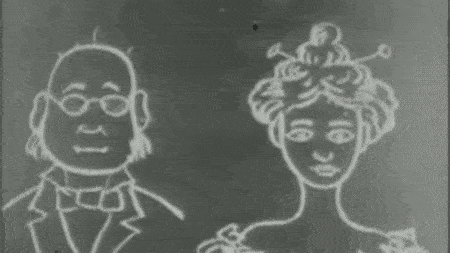
In 1906, the American Vitagraph Company released a film entitled Humorous Phases of Funny Faces, widely regarded as the first animated film. Running for about 3 minutes, it features a series of hand-drawn animated scenes, including a man smoking a cigar, a dog jumping through a hoop, and a man flipping his umbrella. The film uses a variety of techniques, including chalk drawings, stop-motion animation, and paper cut-out animation. These techniques would continue to be used, and served as a blueprint for animation in the 20th century.

Not too long after this, the French film, Fantasmagorie was released. Upon first glance, the frames appear to be drawn on a chalkboard, similarly to Humorous Phases of Funny Faces, of which it has drawn comparisons to. In reality, the film’s creator, Émile Cohl, had drawn each frame on paper and then shot them onto negative film. Despite the short running time, at only a minute and 45 seconds, it features 700 drawings. Fantasmagorie paved the way for storytelling through animated films.
Innovations in Animation
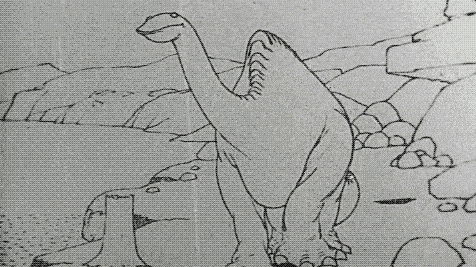
In 1914, the world of animation was shook by Winsor McCay, who introduced several groundbreaking techniques with his film Gertie the Dinosaur. One of these was keyframing, where key poses are drawn first before starting the inbetweening process – filling in the frames between key poses to create smoother motion. Registration marks, used to maintain consistent positioning between frames and layers, were another tool first used in Gertie the Dinosaur. Lastly, McCay used animation loops for repetitive actions, such as Gertie’s tail swaying. These innovations soon became industry standard, most of which are still being used in animation to this day. Additionally, it streamlined the process of animation, shortening the time it took to create animated films and videos.
The invention of cel animation came about in 1915, which allowed the foreground and background of an animation to be drawn separately, revolutionizing the industry. Patented by Earl Hurd, cel animation involved drawing characters on transparent celluloid sheets (cels), which were then layered over painted backgrounds. This dramatically sped up the animation process, even more when combined with McCay’s keyframing, inbetweening, and animation loop techniques. This also allowed for more visually complex and dynamic animations.
In the same year, Max Fleischer invented rotoscoping, which includes tracing over live-action footage to create realistic movement, allowing animators to capture subtle human movements and expressions, creating more lifelike characters. It also influenced the development of digital techniques later used in modern films. Rotoscoping was used in Fleischer’s early works, such as Out of the Inkwell (which we’ll come back to later!).
Rise of Animation in Culture
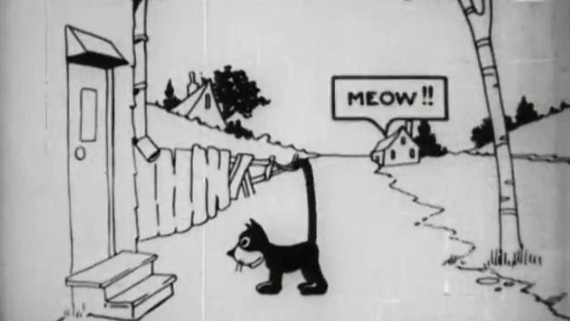
Felix the Cat was the first true star of animated films. Created by Pat Sullivan and Otto Messmer (which cartoonist actually created Felix remains a debate to this day), Felix’s simple design made him easy to draw and animate. His first appearance was in a short film called Feline Follies. He was immediately a huge hit with audiences, who loved him for his mischievous and expressive personality, as well as the fun jokes and gags featured in the films. In fact, he was so much of a success that he started being featured on merchandise, in comics, and as companies’ mascots! The success of Felix the Cat showed the growing impact of animation in entertainment – a pivotal moment in animation history.
Fun Fact: Felix did not receive his iconic name until his third film appearance, The Adventures of Felix. In Feline Follies, Felix was referred to as Master Tom.
Golden Age
Animated Shorts
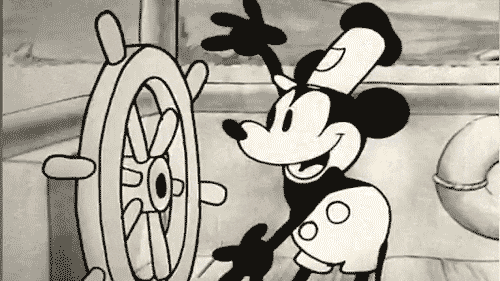
The release of the first feature length film with sound, The Jazz Singer in 1927 ended the era of silent films, leaving an opening in the cartoon industry for animated “talkies”. Walt Disney, at the time just a young cartoon producer looking to get his start in the industry, seized this opportunity and created the first sound-synchronized animation. Steamboat Willie (Available on DVD) was not the first appearance of Disney’s now-iconic Mickey Mouse character, but it was his first appearance to achieve commercial, as well as critical, success. The success of the short film launched the entire animation industry into a golden age, with The Walt Disney Company holding the torch for most of the innovations that would be made within the next 40 years.

As mentioned earlier, Max Fleischer’s series Out of the Inkwell used rotoscoping, not only to realistically depict movements, but also to cleverly combine both live-action and animated sequences, often featuring the character Ko-Ko, an impish clown. After the advent of synchronized sound animations, Fleischer’s company created the Talkartoon series, in which the lovable Betty Boop character was born, first appearing in the episode “Dizzy Dishes” in 1930. She became a popular character, receiving her own series only two years later. Fleischer Studios was also responsible for the animated adaptation of Popeye the Sailor (previously only featured in comic strips), which challenged Disney’s place in the animated short industry. Both shows were known for their adult themes and edgy humor, catering to more mature audiences.
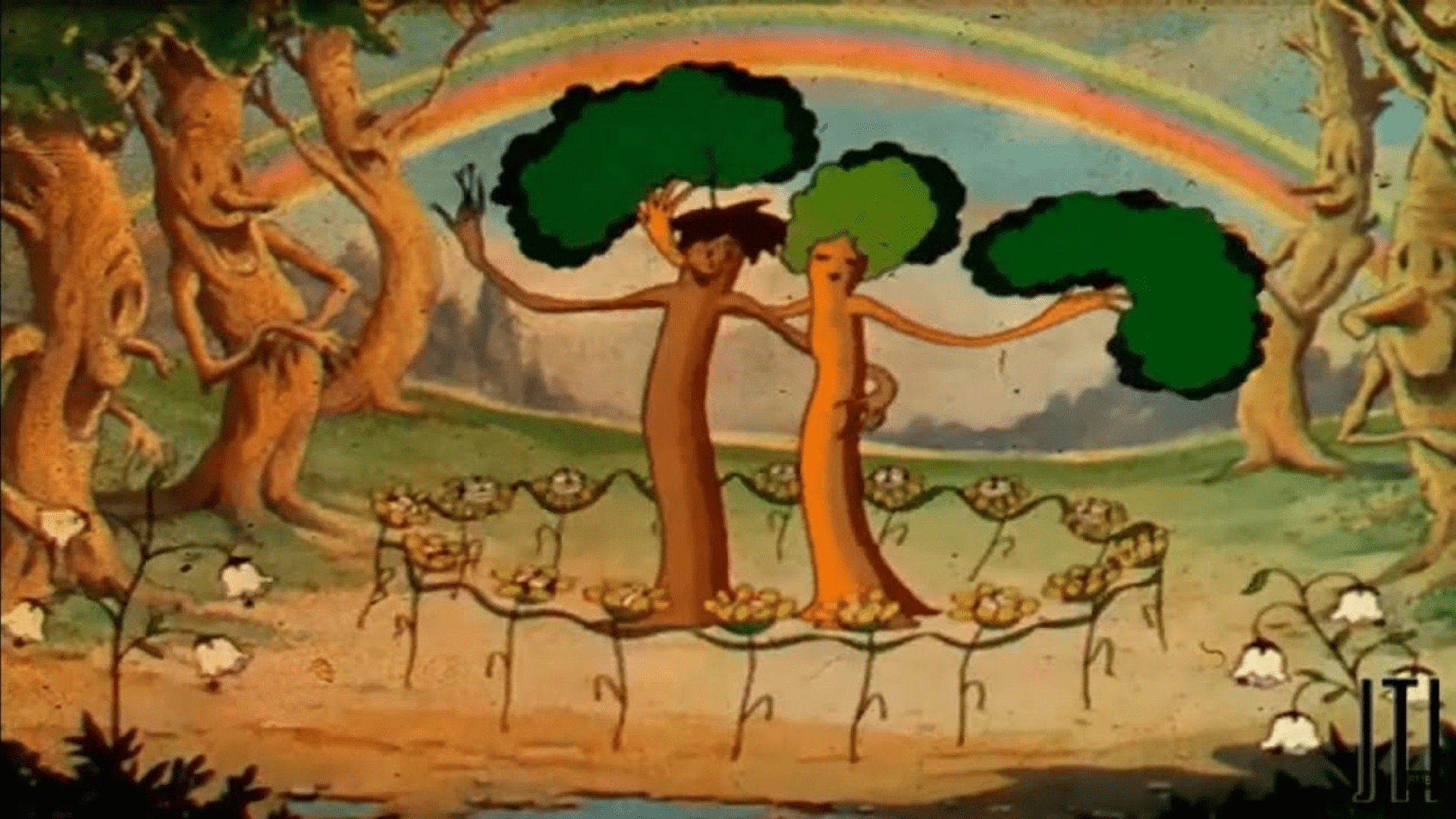
At the same time, Disney began producing not only the Mickey Mouse cartoon series, but also Silly Symphonies – focusing more on emotional themes rather than the silly antics of Mickey and friends. Flowers and Trees (1932) was a part of this series, and was the first full-color animation, as well as the first film to use the three-strip Technicolor process. The process allowed for the use of a full range of colors in films. Flowers and Trees was released 3 years before the first live-action film to use the three-strip process, adding further novelty to Disney’s cartoons.
Animation in Movies and TV
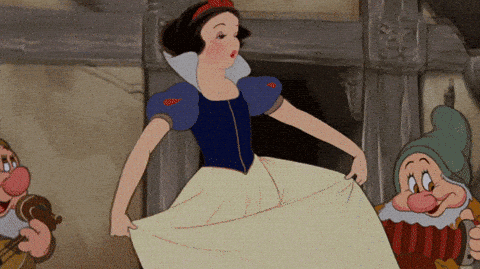
In the mid 1930s, the multiplane camera – an advanced camera that moves multiple layers of artwork to create the illusion of depth – was invented. Snow White and the Seven Dwarfs was Disney’s first animated feature-length film, and was made using the multiplane camera, stunning audiences and being deemed an instant classic by publications such as The New York Times. Not only was the camera work impressive, but the level of detail and expression by the characters and backgrounds in the film were something one-of-a-kind.

Animated movies saw great commercial and critical success throughout the midcentury, with Disney making some of the most memorable films of the era that are still enjoyed today. However, Disney was not the only company making waves in the industry. Although Warner Bros.’ Looney Tunes short films had been played in theatres since the 1930s, it would not be until the mid 1950s until they would be broadcasted on television. Prior to this, Looney Tunes and Merrie Melodies (another series of animated shorts created by Warner Bros.), were the most popular animated shorts in movie theaters. The move to television allowed the cartoons to reach an entirely new generation, and further popularized the characters, with Six Flags obtaining the rights to use Looney Tunes characters in their theme parks. Animated TV was not only popular in the US, with Japanese series Astro Boy, premiering in 1963, achieving such great success that an English version of the show began airing in America the same year as its release in Japan. The show pioneered the style of animation that would come to be known as Anime. Animated series continued to flourish further into the 1960s, with the sitcom The Flintstones becoming the first animated series to obtain a primetime slot on television.
Modern Age
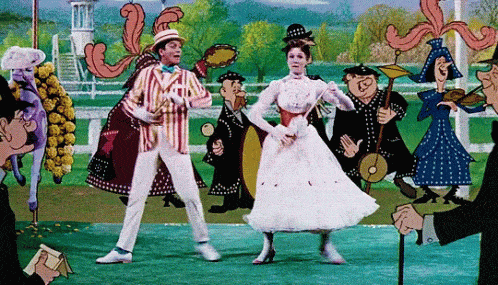
After Sleeping Beauty’s failure as a theatrical release left Disney with a significant financial burden, there was an increasing push to develop new techniques that would cut costs. Disney’s 1961 release One Hundred and One Dalmatians was the first of their films to be made using xerography, a process that eliminates an entire stage in the animation process, saving both time and money. The studio also moved away from princess films during this time, not producing another until 1989’s The Little Mermaid. The technique would be used in later Disney films, as well as films from many other studios, being used until being replaced by digital animation techniques. Mary Poppins, an animated/live-action musical hybrid, was released in 1964, becoming the highest-grossing film of that year, additionally earning 13 Academy Award nominations. Not long after this, Walt Disney passed away, marking the beginning of Disney’s decline, but bringing on a wave of innovation from other animation studios.
An Evolving Medium

Although computer-generated animations had been experimented with since the 1940s, with the first being created in 1958, it was not until the 1970s that it would start being used in feature films. The first film to use computer-generated animation was Westworld, incorporating a short 2D animation sequence, which was groundbreaking at the time. CGI continued to be used as a technique to produce visual effects in other films of the era. Although at first, most of the films that utilized CGI effects were from the sci-fi genre, such as Star Wars, Alien, and Tron, other genres eventually also started using CGI. Computers also started to be used to aid in the traditional animation process.

The 1980s also marked the beginning of the cartoon explosion in the United States. Children’s programming had much to offer due to the rise of toy-driven media franchises, dominated by shows such as TMNT, Transformers, and He-Man. Adults were not a forgotten market, however, with The Simpsons premiering in 1989 – the first successful prime-time animated sitcom since The Flintstones. The Simpsons revolutionized TV animation, proving that animation was not only a children’s media medium, making it possible for future animated television shows aimed at mature audiences to achieve success. Meanwhile, the Anime genre gained an even broader audience with the success of films like My Neighbor Totoro and Kiki’s Delivery Service (both produced by Studio Ghibli) and the cartoon Dragon Ball.
The CGI Takeover
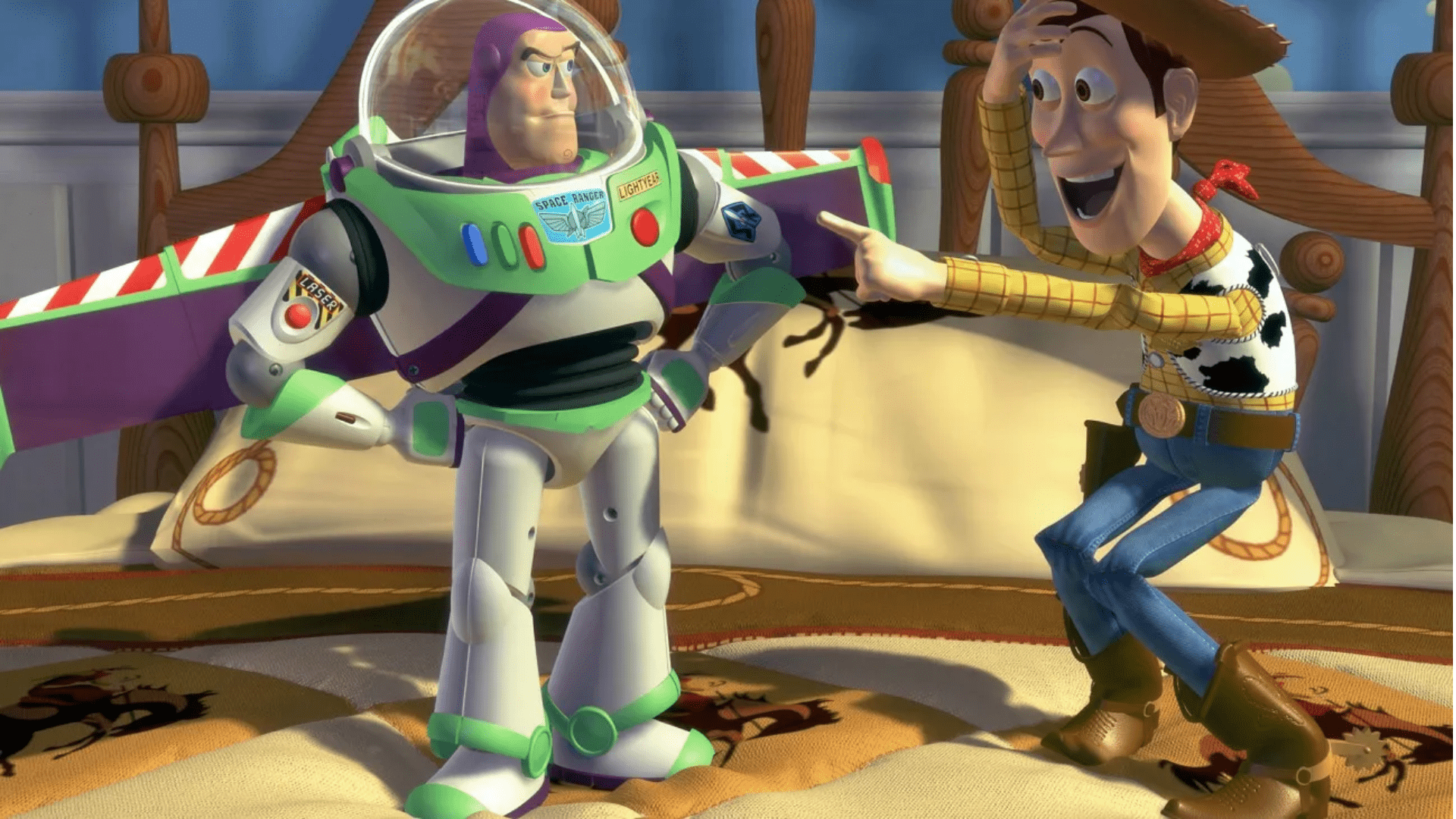
While CGI had become increasingly advanced and used in more and more feature films throughout the years, there had never been a movie to be created using entirely 3D animated CGI until Toy Story in 1995. The Pixar film proved that CGI animation could replace traditional 2D animation entirely, with other studios jumping onto the bandwagon in the years following, with DreamWorks’ Shrek releasing in 2001 and Blue Sky Studios’ Ice Age releasing the following year. Even Disney jumped onto the trend with its first entirely 3D animated CGI film, Chicken Little, releasing in 2005. The industry began leaning more towards CGI animation instead of traditional animation during the mid 2000’s, with Disney releasing their last traditionally animated films in the early 2010’s.
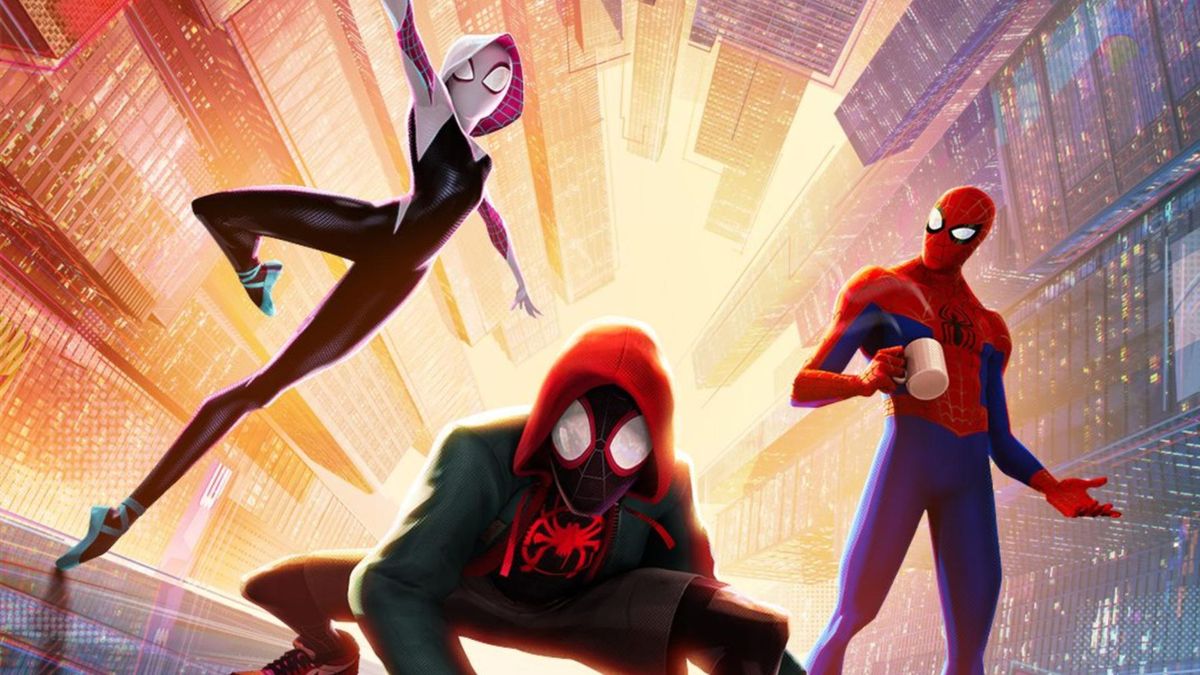
Beyond CGI, stop-motion animation, one of the oldest animation techniques, has seen a resurgence in our current era, with Coraline and ParaNorman both seeing box office and critical success. Anime has only skyrocketed in popularity, with Studio Ghibli remaining the most popular and influential filmmaker in the genre. Television anime has become more popular than movies in the genre, with series like Attack on Titan and One Piece dominating streaming platforms internationally. Most recently, a film that has redefined that genre and set a new standard for the bounds of animation is Spider-Man: Into the Spider-Verse. Spider-Verse combines hand-drawn elements, dynamic frame rates, and a comic book inspired aesthetic. The film’s innovative elements signal a shift towards experimentation in the genre, proving that animation can continue to evolve beyond traditional CGI and 2D styles, and continue to challenge the boundaries of the medium for years to come.

